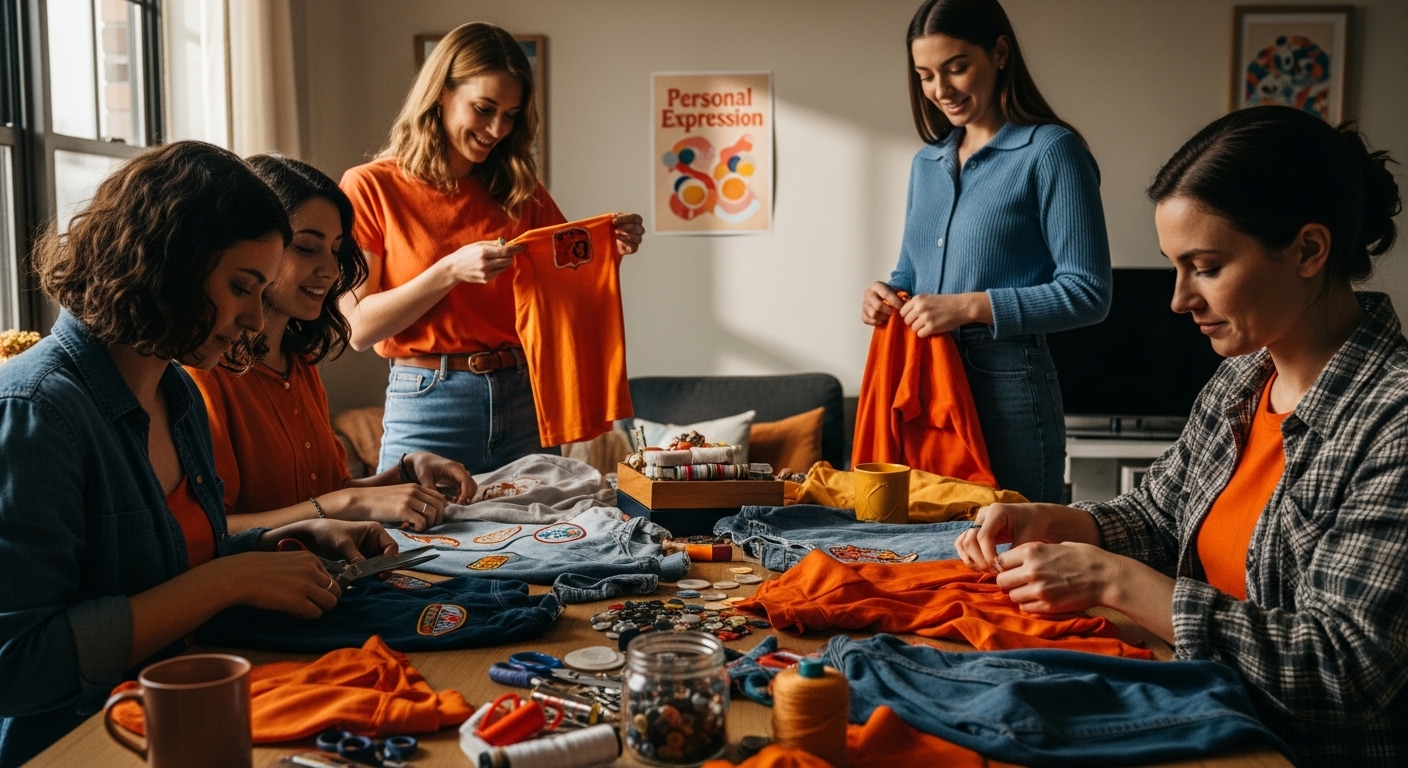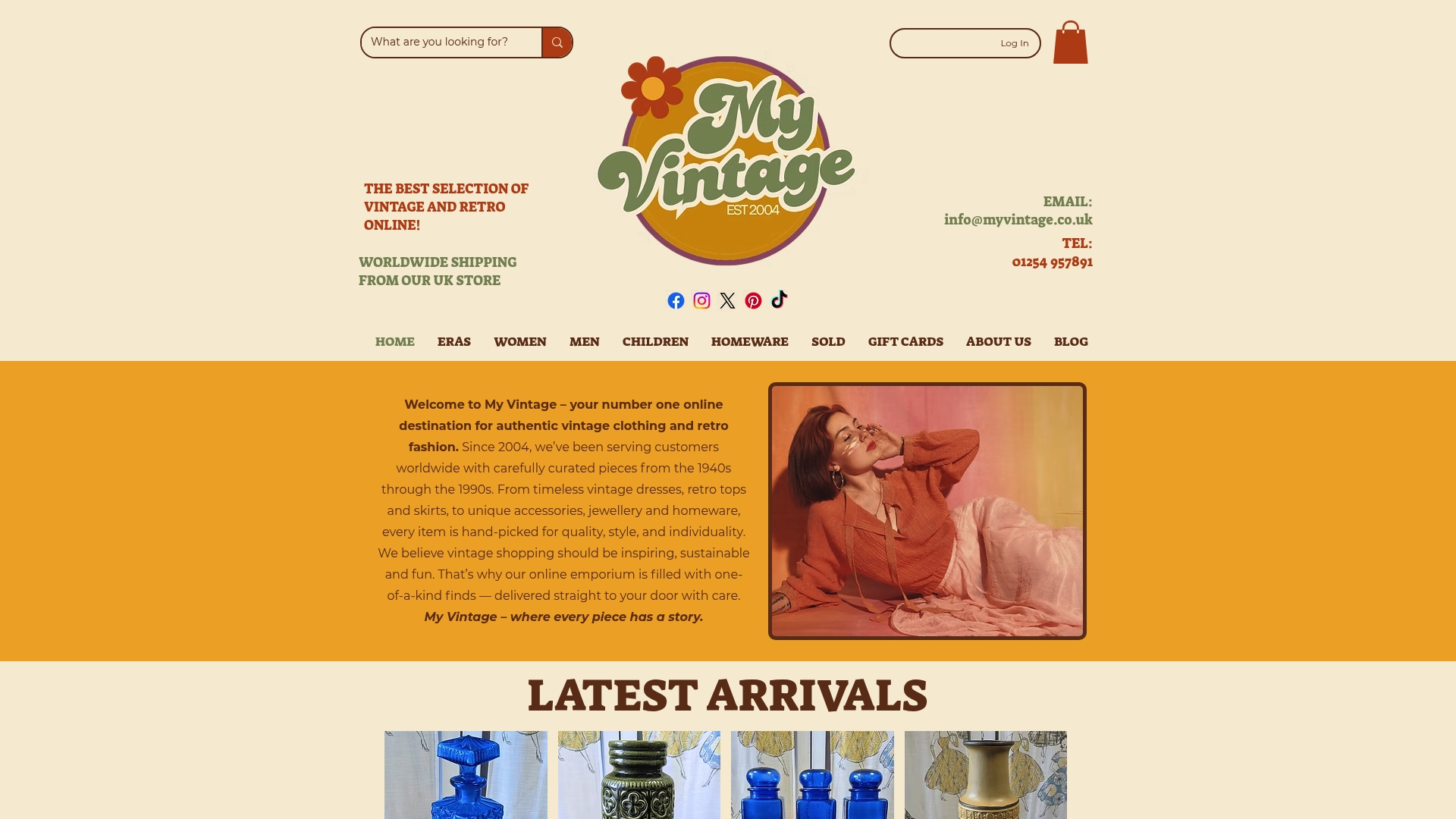What is Thrift Fashion? Understanding Its Impact and Appeal
- Emma

- Sep 22
- 7 min read

Thrift fashion is turning heads everywhere, with shops overflowing and online sales climbing by the day. Yet while most people link it to budget finds and quirky retro prints, something much bigger is happening behind the seams. In 2020, half of Millennials and Gen Z increased their second-hand clothing purchases. The real story is not about saving money or chasing trends. Thrift fashion is quietly shaping a new era where style, sustainability, and social impact come together in unexpected ways.
Table of Contents
Quick Summary
Takeaway | Explanation |
Thrift fashion promotes sustainability. | This approach reduces waste by extending the lifecycle of garments and minimizing environmental impact. |
Thrift fashion enhances economic accessibility. | It makes unique and stylish clothing available at lower price points, breaking down economic barriers. |
Personal expression is central to thrift fashion. | Thrift fashion allows individuals to showcase their unique style through distinctive, non-mass-produced pieces. |
Physical stores support community connections. | Thrift shops often benefit local charities and provide a tactile shopping experience for customers. |
Online platforms widen access to second-hand styles. | Digital marketplaces enable global buying and selling of thrift items, making sustainable fashion more accessible to everyone. |
Understanding Thrift Fashion: A Definition
Thrift fashion represents a dynamic approach to clothing consumption that transcends traditional retail models, focusing on purchasing pre-owned, secondhand garments at affordable prices. Research from Glasgow Caledonian University defines this fashion segment as more than just a shopping strategy — it’s a comprehensive lifestyle choice that intersects sustainability, individual expression, and economic consciousness.
The Core Philosophy of Thrift Fashion
At its essence, thrift fashion embodies a radical reimagining of clothing acquisition. Unlike conventional retail, which prioritizes mass production and quick consumption, thrift fashion champions several transformative principles:
Sustainability: Reducing textile waste and minimising environmental impact
Economic Accessibility: Making fashionable clothing available at lower price points
Individual Expression: Enabling unique personal style through distinctive, one-of-a-kind pieces
These principles challenge the traditional fast fashion paradigm, offering an alternative that is both environmentally responsible and creatively liberating. Our guide on understanding sustainable fashion provides deeper insights into this revolutionary approach.

Economic and Environmental Dimensions
Thrift fashion operates as a circular economy model, where clothing is continuously reused, recycled, and reimagined. This approach significantly reduces the environmental footprint associated with textile production. By extending the lifecycle of garments, thrift fashion enthusiasts actively combat the wasteful practices of fast fashion, transforming second-hand shopping from a budget necessity into a conscious lifestyle choice.
Moreover, thrift fashion democratises style, breaking down economic barriers that traditionally limit fashion access. Whether sourced from charity shops, vintage stores, online marketplaces, or specialised vintage retailers, these garments offer an inclusive pathway to personal style that transcends socioeconomic boundaries.
The Importance of Thrift Fashion in Sustainable Shopping
Thrift fashion has emerged as a critical strategy in addressing the environmental challenges posed by traditional clothing consumption. Research from Blaby District Council highlights the transformative potential of sustainable fashion practices, emphasising how individual choices can collectively reduce textile waste and environmental impact.
Environmental Impact Reduction
The clothing industry is notorious for its substantial ecological footprint, with massive resource consumption and waste generation. Thrift fashion directly confronts these challenges by:
Reducing Textile Waste: Extending the lifecycle of existing garments
Minimising Production Emissions: Decreasing demand for new clothing manufacturing
Conserving Resources: Preventing unnecessary water and energy consumption associated with new textile production
By redirecting clothing from landfills and promoting reuse, thrift shopping becomes a powerful mechanism for environmental conservation. Vintage Clothing - The Ultimate Sustainable Fashion Choice offers deeper insights into this revolutionary approach.
Economic and Social Dimensions
Beyond environmental benefits, thrift fashion presents significant economic and social advantages. It democratises fashion access by providing high-quality clothing at affordable prices, challenging the exclusivity often associated with sustainable fashion. Moreover, thrift shopping supports local economies, charity organisations, and creates a more inclusive fashion ecosystem that values resourcefulness and creativity over disposable consumption.
Through conscious consumer choices, individuals can transform thrift fashion from a marginal practice into a mainstream movement, driving meaningful change in how we perceive, purchase, and appreciate clothing.
The following table outlines key benefits and dimensions of thrift fashion, providing a concise reference for its primary environmental, economic, and social impacts.
Aspect | Explanation |
Environmental Benefit | Reduces textile waste, cuts emissions, and conserves water and energy resources |
Economic Accessibility | Offers stylish clothing at lower prices, making fashion more inclusive |
Social Impact | Supports local charities, strengthens community ties, and encourages resourcefulness |
Individual Expression | Allows unique personal style that resists mass-market uniformity |
How Thrift Fashion Influences Modern Trends
Research by the North London Waste Authority reveals a significant cultural shift, with 50% of Millennials and Gen Z increasing their second-hand clothing purchases in 2020. This trend demonstrates how thrift fashion is not merely a niche movement, but a powerful force reshaping contemporary style narratives.
Trend Democratisation and Personal Style
Thrift fashion fundamentally challenges traditional fashion hierarchies by enabling unprecedented style accessibility. Instead of being dictated by high-end designer collections, modern fashion trends are increasingly driven by individual creativity and sustainable choices:
Individuality: Celebrating unique, non-mass-produced clothing pieces
Creativity: Mixing vintage items with contemporary fashion
Personal Expression: Rejecting uniform, corporate fashion standards
This democratisation means anyone can become a trendsetter, regardless of budget or background. Bespoke: The Art of Upcycling Vintage Clothing explores how personal modification further amplifies this trend.
Cultural and Aesthetic Transformation
Thrift fashion has evolved from being perceived as a budget necessity to a deliberate, aesthetically sophisticated choice. Contemporary fashion designers and influencers increasingly incorporate vintage and second-hand pieces, legitimising thrift fashion as a genuine style strategy. This shift represents more than a trend — it’s a fundamental reimagining of fashion consumption, where value is measured not by price tags, but by uniqueness, sustainability, and personal narrative.
By challenging mass production and promoting individual creativity, thrift fashion is rewriting the rules of style, transforming how we perceive, acquire, and celebrate clothing.
Key Concepts in Thrift Fashion: Styles and Brands
Research from the University of St Andrews explores the nuanced psychological motivations behind second-hand clothing consumption, revealing that thrift fashion transcends mere economic considerations and represents a complex intersection of personal ethics, style, and sustainability.
Defining Vintage and Thrift Style Categories
Thrift fashion encompasses diverse style categories, each representing a unique aesthetic and historical context:
Retro: Clothing mimicking specific historical periods (1950s, 1960s, 1970s)
Vintage: Authentic garments from previous decades, typically 20-100 years old
Upcycled: Redesigned or repurposed clothing items transformed into contemporary pieces
These categories demonstrate the rich complexity of thrift fashion, offering multiple pathways for personal expression.
To help clarify the stylistic scope of thrift fashion, the following table summarises the primary categories and their distinguishing characteristics.
Category | Description | Typical Age/Origin |
Vintage | Authentic garments from previous decades | Typically 20-100 years old |
Retro | Newer clothing that mimics styles from specific historical periods | Inspired by 1950s-1970s eras |
Upcycled | Redesigned or repurposed items transformed into new pieces | Contemporary reworking of garments |
Decoding Vintage Labels: A Guide to Understanding Brands and Tags provides deeper insights into identifying authentic pieces. |
Brand Significance and Authenticity
In thrift fashion, brand heritage plays a crucial role. Certain vintage brands carry significant cultural and historical value, transforming second-hand clothing from mere garments into collectible artefacts. Authentic vintage pieces from renowned designers or specific historical periods can appreciate in value, making thrift shopping not just a sustainable choice, but potentially a strategic investment.
Ultimately, thrift fashion represents a dynamic ecosystem where personal style, historical narrative, and sustainable consumption intersect, challenging traditional fashion paradigms and offering a more conscious approach to personal expression.

The Role of Thrift Stores and Online Platforms
Research by Thrift+ highlights the innovative approaches emerging in second-hand clothing markets, demonstrating how digital platforms and physical stores are revolutionising sustainable fashion consumption. These platforms serve as critical ecosystems connecting conscious consumers with unique, pre-loved garments.
Physical Thrift Store Dynamics
Traditional thrift stores remain fundamental to the second-hand fashion landscape, offering unique advantages:
Community Connection: Supporting local charities and social enterprises
Tactile Shopping Experience: Allowing direct interaction with clothing
Immediate Gratification: Enabling instant purchase and try-on opportunities
These physical spaces provide more than just clothing transactions — they create social environments that celebrate sustainable fashion. 5 Tips for Buying Vintage Online complements this exploration by offering guidance for digital thrifting.
Digital Platforms and Global Accessibility
Online thrift platforms have dramatically expanded the reach and accessibility of second-hand fashion.
Digital marketplaces democratise vintage shopping, connecting global sellers and buyers, transcending geographical limitations. These platforms leverage advanced technologies like AI-powered sizing recommendations, detailed condition descriptions, and comprehensive vintage authentication processes.
By bridging physical and digital realms, thrift stores and online platforms are transforming fashion consumption from a linear, disposable model to a circular, community-driven ecosystem that prioritises sustainability, individual expression, and conscious consumption.
Take Your First Step Into Authentic Thrift Fashion with My Vintage
In the search for true sustainability, individuality and style, many struggle to find genuinely unique pieces that reflect their identity while helping the planet. The article you have just read highlights common challenges such as fast fashion waste, the lack of originality in mass-produced clothing and the environmental impact of new textile production. At My Vintage, you will discover a handpicked collection of vintage clothing and retro homeware that solves these problems by offering authentic garments with real cultural and historical stories.

Are you ready to make a meaningful change to your wardrobe and home? Explore My Vintage and experience curated vintage fashion that supports your value for sustainability and personal flair. Shop now for timeless style that not only stands out but also leaves a positive mark. Begin your journey with us today and rethink what fashion can be.
Frequently Asked Questions
What is thrift fashion?
Thrift fashion is a sustainable approach to clothing consumption that involves buying pre-owned and second-hand garments. It focuses on affordability, individual expression, and reducing environmental impact.
How does thrift fashion contribute to sustainability?
Thrift fashion reduces textile waste by extending the lifecycle of garments, minimises production emissions, and conserves resources, making it an eco-friendly choice compared to fast fashion.
What are the different categories within thrift fashion?
Thrift fashion includes several categories such as vintage (authentic pieces from previous decades), retro (clothing mimicking specific historical periods), and upcycled items (redesigned or repurposed clothing).
Why is thrift fashion appealing to modern consumers?
Thrift fashion appeals to modern consumers by promoting individuality, offering unique clothing options, and making stylish items accessible at lower price points, thus challenging traditional fashion hierarchies.
Recommended









Comments